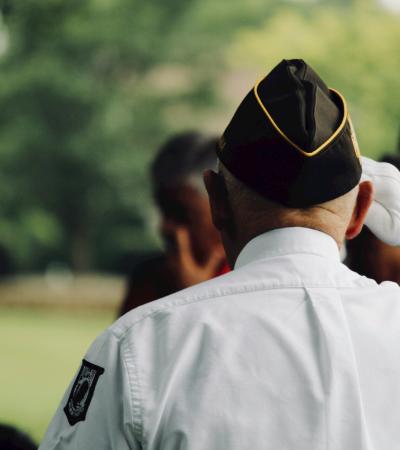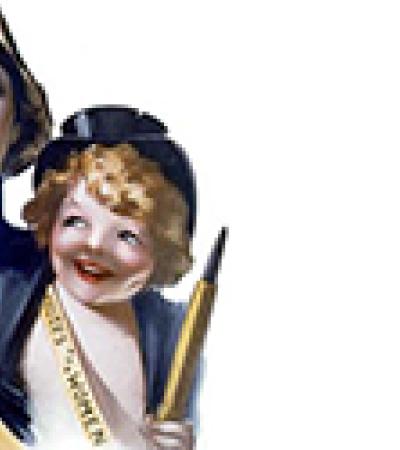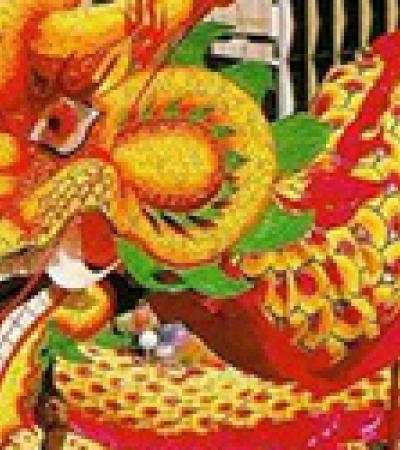This month, EDSITEment offers lesson plans for a variety of American history–related film resources, with topics including Prohibition, post-Columbus America, American art, and the War of 1812. The site also celebrates Halloween and el Día de Muertos and highlights two exhibitions you won’t want to miss.

Prohibition
The NEH-funded PBS documentary Prohibition, produced by Ken Burns and Lynn Novick, presents a compelling saga of the rise, rule, and fall of the Eighteenth Amendment and the era that encompassed it. “Episode 1, A Nation of Drunkards” explores the early influence of alcohol during America’s early years and the temperance activism that soon followed. “Episode 2, A Nation of Scofflaws” examines the problems of enforcement, as millions of law-abiding Americans become lawbreakers overnight. In “Episode 3, A Nation of Hypocrites” support for the law diminished as the playfulness of sneaking around for a drink gave way to disenchantment.
Teachers Greg Timmons and Michael Hutchinson, who have both written lessons for previous projects by Ken Burns, identified several enduring themes running through the series that are present through American history and relevant today. As curriculum writers, Timmons and Hutchinson saw the educational potential of Prohibition to explore these themes in the context of American history, but also to more current political, social, and economic issues. They built classroom lessons that use the richness of the series’ episodes with embedded video clips and a multitude of skill-building activities and critical thinking questions. The lessons provide great opportunities for cross-curriculum application and integrated studies and align well to twenty-first-century skills as well as national and state standards. Also be sure to check out EDSITEment’s guide, How Teachers Can Make the Most Out of Prohibition.
Post-Columbus America
There are few absolutes in history. Yet, teachers simply don’t have the time in light of high-stakes testing and other shifting priorities to do much more than boil down events and ideas to a few simple explanations. However, providing students with simple explanations paints an uneven picture of history that ultimately will distort their perception. We must find opportunities to bring them into the intricacies of historical stories. The recent PBS documentary When Worlds Collide does just that as it takes the audience through the first one hundred years of the Spanish Empire in the New World. Instead of casting the Spanish as murderers or heroes, and the indigenous population as victims or savages, the program explores the set of entangled exchanges and negotiations that occurred between these peoples.
Dan McDowell, a history teacher in a public school, created lesson plans that involve a mix of innovative tasks that ask students to critically examine materials and then demonstrate their understanding of the content through a variety of creative projects. The strategies involve having students judiciously consider the implications of those past events, utilize modern Internet (Web 2.0) tools, and make connections between the events of the fifteenth and sixteenth centuries and today. EDSITEment has also created a guide for When Worlds Collide that includes the lesson plans as well as additional resources.
American Art
Picturing America on Screen is the video online and on-air companion to the National Endowment for the Humanities’ Picturing America initiative. Picturing America gave public and private schools, libraries, and communities the opportunity to learn about our nation’s history through its artistic heritage. The initiative is composed of forty carefully selected works of art spanning several centuries created by American painters, sculptors, photographers, artisans, and architects.
In creative perspectives from nine filmmakers, illuminated by commentary from a range of participants, experts, and scholars, Picturing America on Screen provides a unique and original opportunity for introducing Americans to their artistic heritage and to the possibilities inherent in using art to teach and understand America’s past. The twenty-five films vary in length, some contain a single art work and some combine two or three of the art works. For example, one segment pairs the Emanuel Leutze painting of Washington crossing the Delaware with the James Karales photograph of the Selma to Montgomery March. Though the pieces were created more than a century apart, they share a surprising compositional symmetry and depict equally inspirational and monumental moments in our nation’s history.
The War of 1812
For two-and-a-half years, Americans fought against the British, Canadian colonists, and native nations. In the years to come, the War of 1812 would be celebrated in some places, and essentially forgotten in others. But it is a war worth remembering—a struggle that threatened the existence of Canada, then divided the United States so deeply that the nation almost broke apart. Some of its battles and heroes became legendary, yet its blunders and cowards were just as prominent. The film shows how the glories of war became enshrined in history, how failures are quickly forgotten, and how inconvenient truths are ignored forever.
The accompanying lesson plans were designed to enhance the educational value of the The War of 1812 for students in elementary, middle, and high school. Every attempt has been made to ensure that the plans are congruent with binational learning standards.The lessons typically use program segments and broad thematic strands, and integrate and honor the contributions of all groups involved in the War. Many of the activities are multidisciplinary, incorporating areas such as English language arts, music, and art.
October Celebrations

Each year on October 31, as the ghosts and goblins of Halloween parade the streets and doorsteps of our neighborhoods, we re-enact remnants of ancient folk customs that pay homage to departed ancestors as well as to the souls of our loved ones who have died. These annual revivals of ancient rituals form the basis of our contemporary American festival. Halloween has traditionally been associated in America with dressing up in costume and with consuming sweets; however, the roots of the holiday lie in late autumn harvest rituals that correspond to natural, seasonal changes and that are expressed in commemorations of the dying year. During this period of transition, cultures across the world remember those who have passed on by drawing an analogy between human death and the dark, cold winter months that loom ahead.
While trick or treating in princess and hobo costumes, carving jack-o-lanterns, and telling spooky ghost stories like Washington Irving’s tale The Legend of Sleepy Hollow are traditional hallmarks of the American holiday, other cultures experience their festivals of the dead in very different forms. The EDSITEMment feature Origins of Halloween and the Day of the Dead can be used with students as a framework for discussing the origins and history of the Halloween festival and introducing them to the Mexican festival, the Day of the Dead (el Día de Muertos), recognizing the common elements shared these festivals of the dead as well as the acknowledging the differences between them.
Exhibitions
Al-Mizan is the Arabic word for balance—both the familiar measuring instrument and the metaphorical pursuit of justice and harmony in all human endeavors. For hundreds of years after the advent of Islam, Arabic was the language in which mathematics and science were most actively studied. The intellectual achievements of scholars in the Islamic world were matched by the emergence of a highly distinctive visual and artistic culture. Featuring an online component in addition to the physical exhibition at Museum of the History of Science in Oxford, Al-Mizan: Sciences and Arts in the Islamic World explores the connections between the sciences and arts in Muslim societies. It presents highlights from the Museum’s collection of Islamic scientific instruments alongside medieval manuscripts, metalwork, and ceramics on loan from other major collections. The links between scientific inquiry and artistic beauty are vividly revealed through the decorative and practical work of the craftsman.
The year 2011 marks the four hundredth anniversary of the first printing of the King James Bible. The traveling exhibition Manifold Greatness: The Creation and Afterlife of the King James Bible tells the story of the origins, creation, and impact of the book, including its influence on English and American literature, and its multifaceted impact on culture and society to the present day. The fascinating history and influence of the King James Bible will interest many, resulting in a new understanding of the book’s social, cultural, literary, and religious influence over four centuries. The exhibition’s accompanying website includes suggested reading, multimedia, and activities for children.



